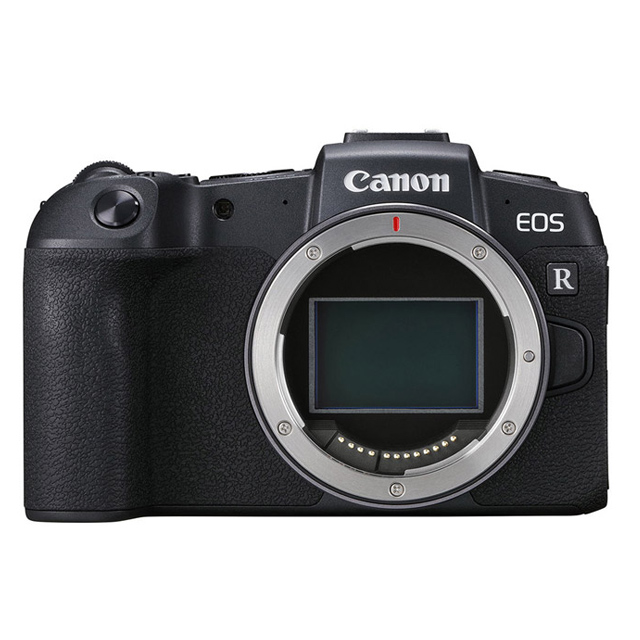Canon相機收購,二手收購,收購相機,全新相機,二手相機 收購5D Mark IV,收購EOS-1D X Mark II,收購EOS M3/M10 收購canon canon 5Ds/5Ds R,,5D Mark III/6D II,7D Mark II 70D/80D,750D/760D,700D/100D 收購FUJIFILM 相機,全系列FUJIFILM 收購二手Nikon 相機,Nikon二手收購,全新Nikong買賣 D3400收購 Nikon 1 j5收購 D750 Df/D810/D610,D5/D4S,D500,D7200/D7500,D5500/D5300 OLYMPUS
標籤: canon相機收購
【Canon】EOS 850D+ 18-55mm+75-300mm III 雙鏡組*(中文平輸) canon相機收購
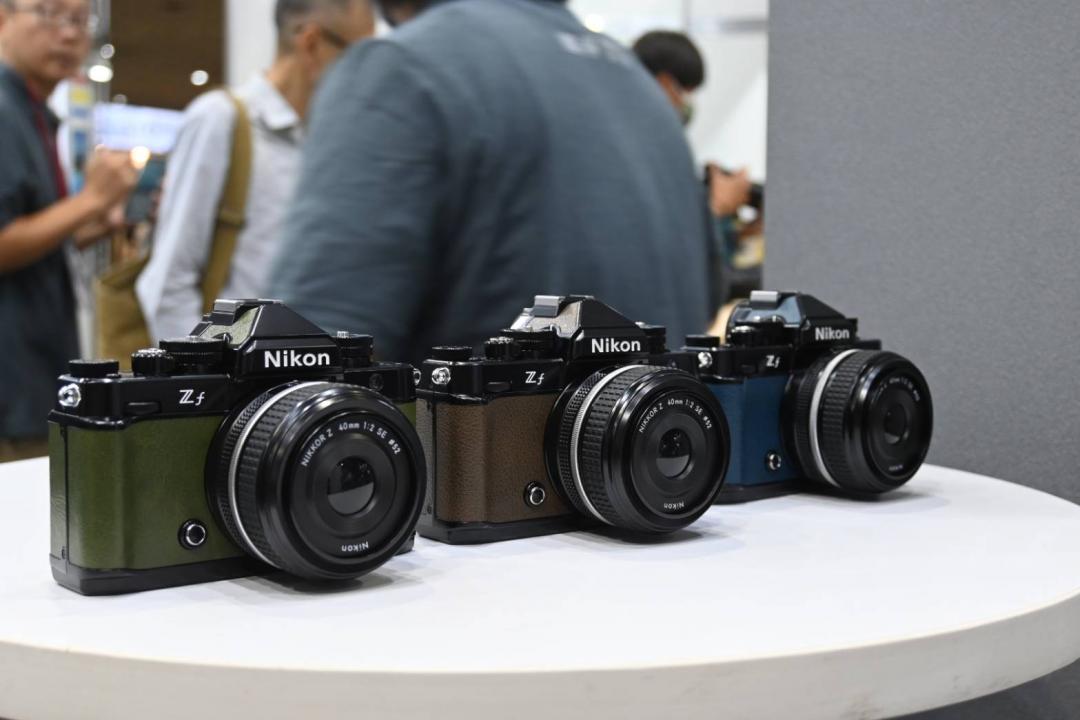 (圖/記者黃肇祥攝)
(圖/記者黃肇祥攝)
日本知名連鎖像機通路 Map Camera 公布年度最熱銷相機、鏡頭兩大排行榜,Nikon 一舉稱霸兩大榜單,可以說是 2023 年的最大贏家,不過從鏡頭的銷售數量來看,Sony 仍舊握有規模龐大的攝影用戶。
2023 年最熱門相機是 Nikon 旗下的 Z8,繼承機皇 Z9 多數規格、效能,還把體積做得更小、價格變便宜,廣受消費者喜愛,其次 Nikon 的 Zf 復古相機也排在第三名。然而綜觀整個榜單,Sony 以 α7RV、α7IV、α7C II 分別攻下第 4-6 名,是入榜最多機款的品牌。
另外還能發現,唯一不可換鏡頭的是有「街拍神機」之稱的理光 RICOH GRIIIx,搶下了第七名,隨身小相機近年藉由社群媒體的推波助瀾,獲得許多年輕用戶的喜愛,說明即便在手機的夾擊之下,隨身相機仍有殺出重圍的可能。
1.Nikon Z8
2.canon相機收購canon R6 II
3.Nikon Zf
4.SONY α7RV
5.SONY α7IV
6.SONY α7C II
7.RICOH GR IIIx
8.FUJIFILM X-S10
9.Panasonic LUMIX S5II
10.FUJIFILM X-T5
鏡頭方面,或許是為了與 Z8 搭配,最熱賣的型號又是由 Nikon 搶下,頂級的變焦鏡頭 Z 24-120mm f/4 獲得第一名。不過從鏡頭銷售排行來看,能發現 Sony 在市場上的領導地位,包含自家推出的原廠鏡頭以及第三方廠商 TAMRON 推出的 28-200mm F2.8-5.6 Di III RXD,讓 E 接環鏡頭一口氣佔了五席之多。
此外,消費者更傾向選購功能性多元的變焦鏡頭,只有 canon相機收購canon RF 50mm f/1.8 STM、Nikkor Z 26mm f/2.8、Sony FE 50mm f/1.4 G Master 三款定焦鏡頭上榜。唯一入榜的 APS-C 鏡頭則是由 Sigma 替富士 X 接環打造的 18-50mm f/2.8 DC DN。
1.Nikon Z 24-120mm f/4
2.Tamron 28-75mm f/2.8 Di III VXD G2
3.Nikon Z 180-600mm f/5.6-6.3 VR
4.SONY FE 20-70mm F4 G SEL2070G
5.TAMRON 28-200mm F2.8-5.6 Di III(Sony E接環)
6.canon相機收購canon RF50mm F1.8 STM
7.SIGMA C 18-50mm F2.8 DC DN (富士 X 接環)
8.Nikon NIKKOR Z 26mm F2.8
9.SONY FE 24-70mm F2.8 GM II SEL2470GM2
10.SONY FE 50mm F1.4 GM SEL50F14GM
canon相機收購 canon相機收購
Canon新一代無反相機EOS R8 同價位最強機種可拍可錄超輕量 canon相機收購
canon相機收購
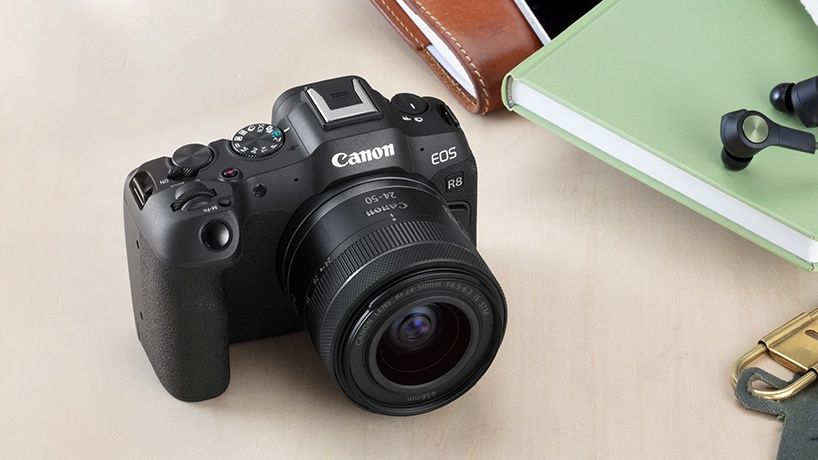
▲ canon相機收購canon 新一代入門無反相機 EOS R8。(圖/翻攝自 canon相機收購canon 官網)
記者樓菀玲/台北報導
canon相機收購canon EOS R8 全片幅無反光鏡相機今日正式上市,為 canon相機收購canon 旗下最經濟型機種,為 EOS RP 後繼機種,可為首次購買全片幅相機的攝影愛好者及內容創作者提供卓越性能,號稱同價位機型當中最強規格的無反相機。
今日,canon相機收購canon 正式推出全新全片幅無反光鏡相機 EOS R8,該相機以輕量化機身和先進的功能吸引攝影愛好者和內容創作者,機身僅重 461 克,具備 2,420 萬像素全片幅 CMOS 影像感測器,並提供 6K 超取樣 4K 60p、FHD 180p 錄影功能以及 canon相機收購canon Log 3。此外,該相機還配備電子快門,最高可達 40 FPS 連拍。
對於創作者而言,EOS R8 具有無與倫比的錄影和拍照功能,可利用 6K RGB 素材超取樣的無裁切 4K UHD 60p 錄影功能來創作,實現高畫質和細緻的短片表現。而且,EOS R8 可連續拍攝 30 分鐘或以上的無裁切 4K UHD(6K超取樣)60p 短片。
為了滿足各種拍攝需求,EOS R8 支援 8-bit 及 YCbCr 4:2:2 10-bit 短片選項、canon相機收購canon Log 3 和 HDR PQ。10-bit HDR PQ 能在無需後期調色的情況下錄製高亮度、豐富層次和廣色域的短片。此外,EOS R8 還具有偽色顯示、斑馬紋顯示、呼吸效應補償功能以及 5 軸防震的短片數位 IS。
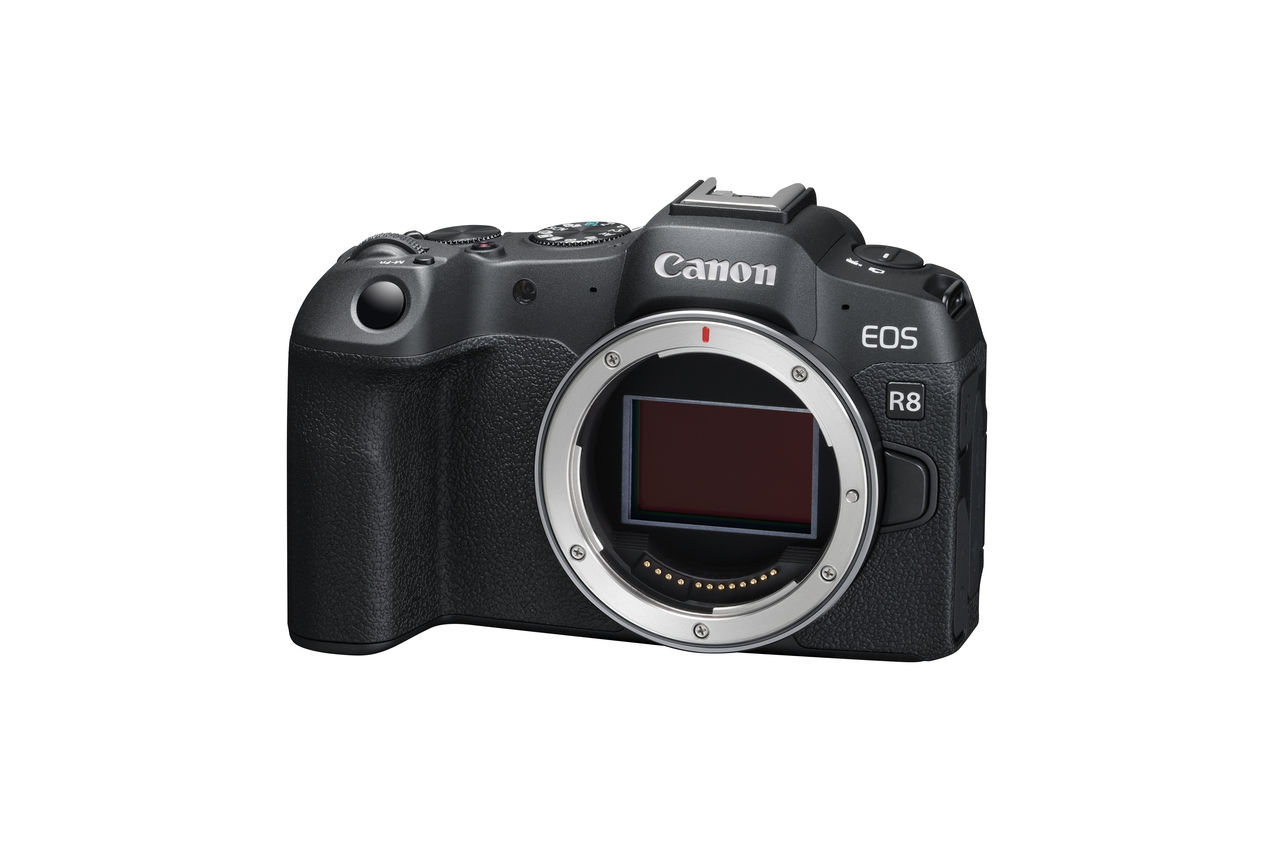
▲ EOS R8 。(圖/翻攝自 canon相機收購canon 官網)
在設計方面,EOS R8 的按鈕重新設計,以提高拍攝操作性。機身左肩加入相片/短片模式切換開關,方便快速轉換拍攝模式。此外,視覺指南可以幫助新手輕鬆掌握相機的功能和設定。
該相機配備了高精度電子觀景器,提供 0.39 吋 236 萬點 0.7 倍 OLED 顯示,最高可達 120FPS。此外,還具有多角度觸控螢幕和防塵防水滴設計,使攝影過程更加便捷與靈活。
總之,canon相機收購canon EOS R8 以其輕巧的機身、卓越的性能和專業功能成為攝影愛好者和內容創作者的理想選擇,配有光學影像穩定器的 RF/RF-S 鏡頭與 EOS R8 的數位防震功能相結合,可實現更穩定流暢的影片效果。此外,OVF 模擬顯示輔助功能通過HDR技術提供更自然的高光和暗部漸變,重現傳統單眼相機光學觀景窗畫面。
高度靈活的 3 吋 162 萬點多角度 Clear View II LCD 觸控螢幕,讓攝影師能夠在高、低角度或繞過障礙物拍攝時尋找新的視角。此外,EOS R8 採用輕巧鎂合金機架加強耐用度,防塵防水滴設計則有助於防止灰塵和水滴滲入相機,目前已知 canon相機收購canon EOS R8 在台售價為 43,900 元,搭配 RF24-50mm f/4.5-6.3 IS STM 鏡頭的 KIT 組合則是為 49,900 元。
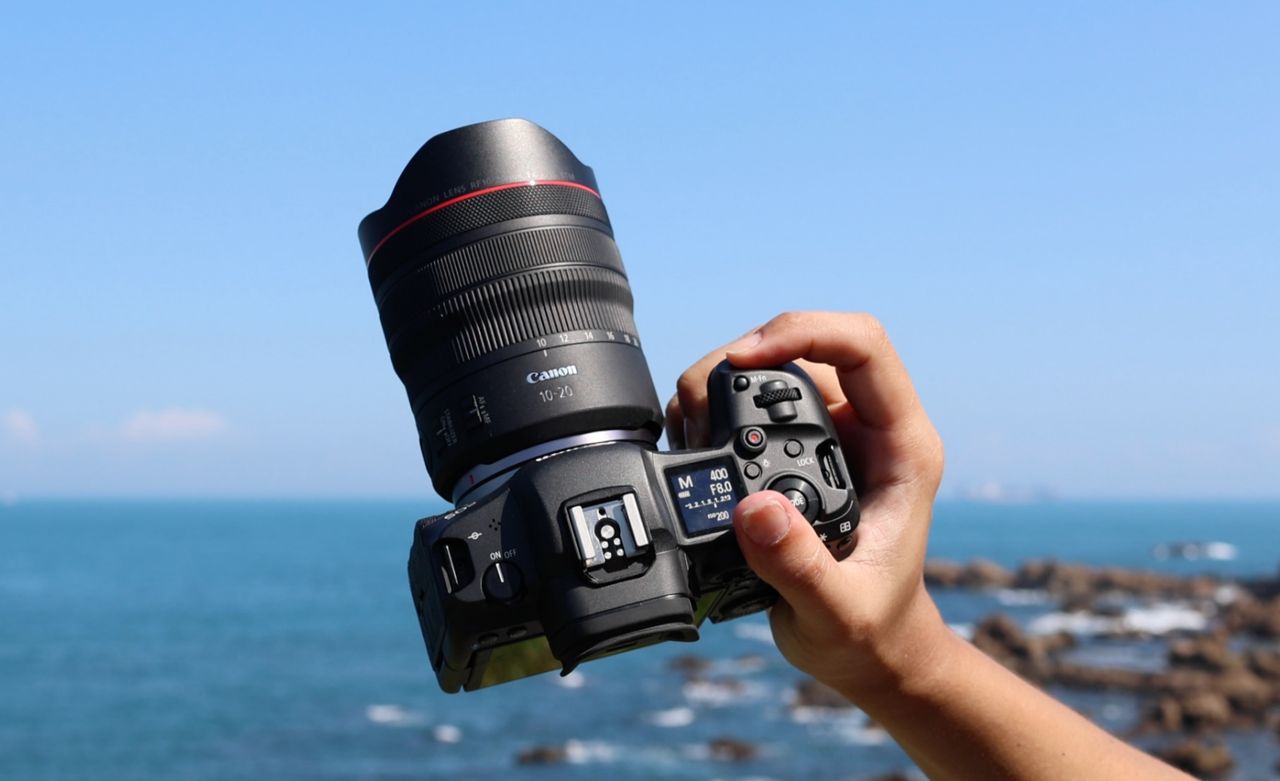
▲ canon相機收購canon RF10-20mm F4 L IS STM 在台開賣。(圖/翻攝自 canon相機收購canon)
記者樓菀玲/台北報導
canon相機收購canon 世界首支 10mm 超廣角全片幅自動對焦鏡頭 RF10-20mm F4 L IS STM,即日起在台正式開賣,輕盈小巧的設計,長度僅約 11.2 公分及重量僅約 570 公克,並提供10mm-20mm 超廣角變焦範圍,輕鬆將廣闊視野盡收眼底。
據了解,鏡頭內建光學影像穩定器,除了提供 5 級防手震效果外,更首次加入周邊協調控制(Peripheral Coordinated Control),配合機身防手震時能有效校正廣角鏡頭經常出現的周邊震動模糊,讓相片的周邊可有更高的影像畫質,拍攝短片時亦可以減低畫面周邊的輕微震動。
基於 RF10-20mm F4 L IS USM 是世界首支 10mm 超廣角全片幅自動對焦鏡頭,能夠帶來 130° 25’ 超廣角視角,廣角鏡頭的廣角端焦距即便相差 1mm ,拍攝範圍也有很大差距。
而 10mm 焦距可涵蓋的畫面面積約為 14mm 的 2 倍、約為 12mm 的 1.4 倍,極其廣闊的視角讓鏡頭適用於狹小空間的拍攝,也可以拍攝整體建築物、廣闊的風景、頭頂上的星空等主題。

▲ 10mm 廣角端可以收錄更多內容在畫面中,圖為攝影熱點東北角十三層遺址。(圖/翻攝自 canon相機收購canon)
從帳面規格來看,RF10-20mm F4 L IS USM 的重量為 570 公克,而長度僅約 11.2 公分,整體設計更加便於攜帶,機動性加倍,無論手持或加入穩定器移動拍攝皆非常適合。
鏡頭本身採用 canon相機收購canon 全新研發的 12 組 16 片光學設計,充分發揮 RF 接環大口徑與短後對焦距離的優勢,這光學設計是在採用相機內建數位變形校正的前題下提升整體影像品質,並為畫面邊緣範圍提供清晰描寫能力。
canon相機收購 canon相機收購
Canon新一代無反相機EOS R8 同價位最強機種可拍可錄超輕量 canon相機收購
canon相機收購

▲ canon相機收購canon 新一代入門無反相機 EOS R8。(圖/翻攝自 canon相機收購canon 官網)
記者樓菀玲/台北報導
canon相機收購canon EOS R8 全片幅無反光鏡相機今日正式上市,為 canon相機收購canon 旗下最經濟型機種,為 EOS RP 後繼機種,可為首次購買全片幅相機的攝影愛好者及內容創作者提供卓越性能,號稱同價位機型當中最強規格的無反相機。
今日,canon相機收購canon 正式推出全新全片幅無反光鏡相機 EOS R8,該相機以輕量化機身和先進的功能吸引攝影愛好者和內容創作者,機身僅重 461 克,具備 2,420 萬像素全片幅 CMOS 影像感測器,並提供 6K 超取樣 4K 60p、FHD 180p 錄影功能以及 canon相機收購canon Log 3。此外,該相機還配備電子快門,最高可達 40 FPS 連拍。
對於創作者而言,EOS R8 具有無與倫比的錄影和拍照功能,可利用 6K RGB 素材超取樣的無裁切 4K UHD 60p 錄影功能來創作,實現高畫質和細緻的短片表現。而且,EOS R8 可連續拍攝 30 分鐘或以上的無裁切 4K UHD(6K超取樣)60p 短片。
為了滿足各種拍攝需求,EOS R8 支援 8-bit 及 YCbCr 4:2:2 10-bit 短片選項、canon相機收購canon Log 3 和 HDR PQ。10-bit HDR PQ 能在無需後期調色的情況下錄製高亮度、豐富層次和廣色域的短片。此外,EOS R8 還具有偽色顯示、斑馬紋顯示、呼吸效應補償功能以及 5 軸防震的短片數位 IS。

▲ EOS R8 。(圖/翻攝自 canon相機收購canon 官網)
在設計方面,EOS R8 的按鈕重新設計,以提高拍攝操作性。機身左肩加入相片/短片模式切換開關,方便快速轉換拍攝模式。此外,視覺指南可以幫助新手輕鬆掌握相機的功能和設定。
該相機配備了高精度電子觀景器,提供 0.39 吋 236 萬點 0.7 倍 OLED 顯示,最高可達 120FPS。此外,還具有多角度觸控螢幕和防塵防水滴設計,使攝影過程更加便捷與靈活。
總之,canon相機收購canon EOS R8 以其輕巧的機身、卓越的性能和專業功能成為攝影愛好者和內容創作者的理想選擇,配有光學影像穩定器的 RF/RF-S 鏡頭與 EOS R8 的數位防震功能相結合,可實現更穩定流暢的影片效果。此外,OVF 模擬顯示輔助功能通過HDR技術提供更自然的高光和暗部漸變,重現傳統單眼相機光學觀景窗畫面。
高度靈活的 3 吋 162 萬點多角度 Clear View II LCD 觸控螢幕,讓攝影師能夠在高、低角度或繞過障礙物拍攝時尋找新的視角。此外,EOS R8 採用輕巧鎂合金機架加強耐用度,防塵防水滴設計則有助於防止灰塵和水滴滲入相機,目前已知 canon相機收購canon EOS R8 在台售價為 43,900 元,搭配 RF24-50mm f/4.5-6.3 IS STM 鏡頭的 KIT 組合則是為 49,900 元。
 (圖/記者黃肇祥攝)
(圖/記者黃肇祥攝)
Sony 今日(17)在台上市全片幅無反單眼相機 α9 III,搭載業界首款「全域快門」全片幅感光元件,締造高達 120fps 高速連拍,並且拍出無變形、無黑屏的照片。
α9 III 採用內建額外記憶體的 2460 萬畫素全片幅感光元件,具備機身 8.0 級 5 軸光學影像穩定系統,能拍攝 4K 120p 無裁切影片,瞄準專業攝影師,尤其是考驗高速連拍的運動、生態攝影領域。最大亮點是全域快門,以往只出現於 1 吋以下的隨身相機,或是不講究畫質的工業相機,α9 III 為第一款把該規格引入全片幅感光元件的單眼相機,得以兼顧高速連拍與高畫質。
全域快門的差異是什麼呢?Sony 亞太區技術產品經理藤本祐介解釋,有別於傳統滾動式快門由上至下讀取像素,照片與照片存在一定的等待時間,全域快門能一次同時讀取所有像素,能夠避免以前高速連拍常見的果凍效益、黑屏畫面。
 α9 III 實拍。全域快門一次讀取所有像素,因此能避免果凍效益,高速揮動的球桿不會因為逐行掃描而出現變形、歪斜。(圖/記者黃肇祥攝)
α9 III 實拍。全域快門一次讀取所有像素,因此能避免果凍效益,高速揮動的球桿不會因為逐行掃描而出現變形、歪斜。(圖/記者黃肇祥攝)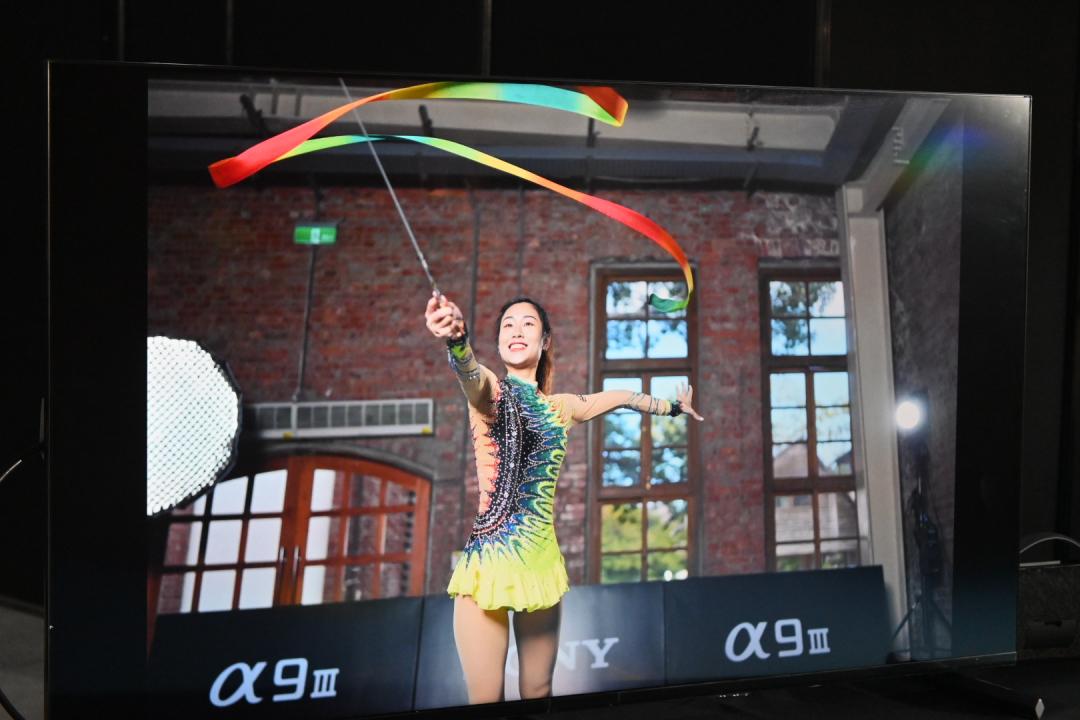 α9 III 搭配支援閃光燈,能以 1/80000 秒的速度與閃光燈同步拍攝,更輕易捕捉每一瞬間的畫面。(圖/記者黃肇祥攝)
α9 III 搭配支援閃光燈,能以 1/80000 秒的速度與閃光燈同步拍攝,更輕易捕捉每一瞬間的畫面。(圖/記者黃肇祥攝) (圖/記者黃肇祥攝)
(圖/記者黃肇祥攝)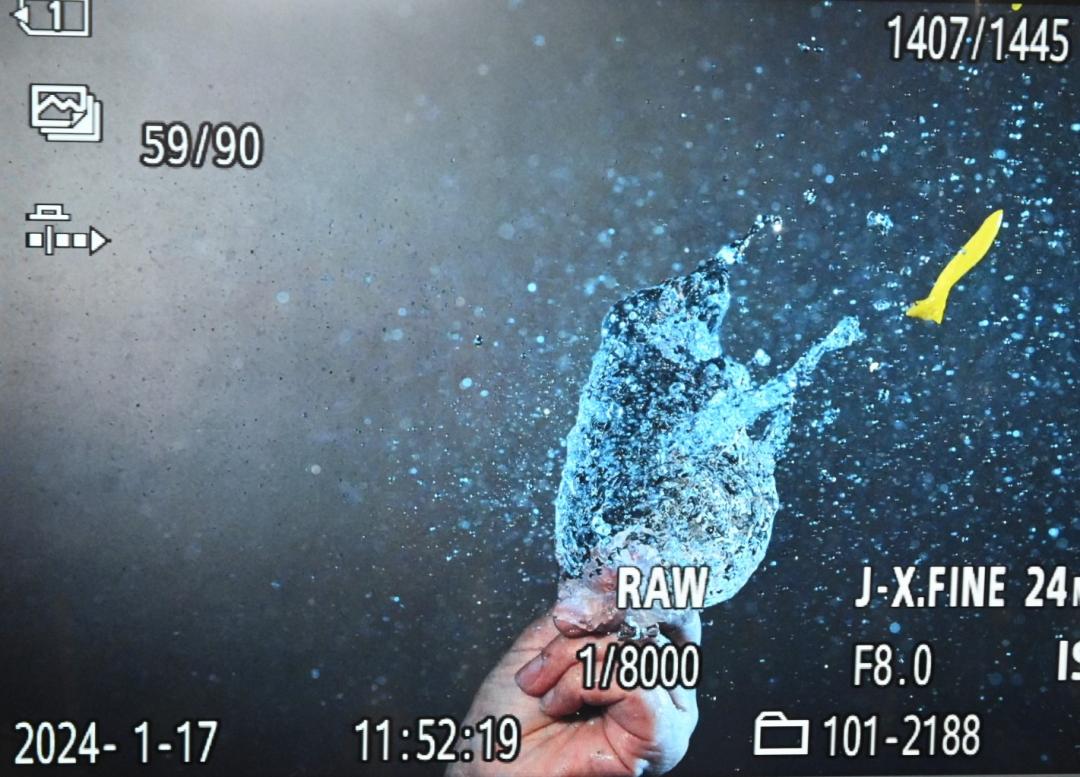 「預拍功能」能提前一秒以Raw格式拍攝,左上角有箭頭的標示,就是以「預拍功能」功能拍攝的照片。(圖/記者黃肇祥攝)
「預拍功能」能提前一秒以Raw格式拍攝,左上角有箭頭的標示,就是以「預拍功能」功能拍攝的照片。(圖/記者黃肇祥攝)
之所以能達成全域快門,Sony 依靠的是新一代 Bionz XR 影像處理器,在 120fps 連拍之中能確保每一張都有自動對焦與自動曝光,並且搭配覆蓋率 95.6%、多達 759 個相位式自動偵測對焦點,以及 AI 處理元件能持續鎖定拍攝的主題的型態、動作以及眼部對焦,不會因為其他物體忽然穿插於前景而改變焦點。
Sony 這次在 α9 III 首度帶來兩項輔助功能,首先是「預拍功能」,可以藉由感光元件的暫存記憶體,在釋放快門前 1 秒提早開始捕捉畫面,減少錯失精采畫面的遺憾。此外,還有能藉由自訂按鍵瞬間啟用的「連拍加速功能」,可暫時提高拍攝速度,省去手動調整參數的步驟。
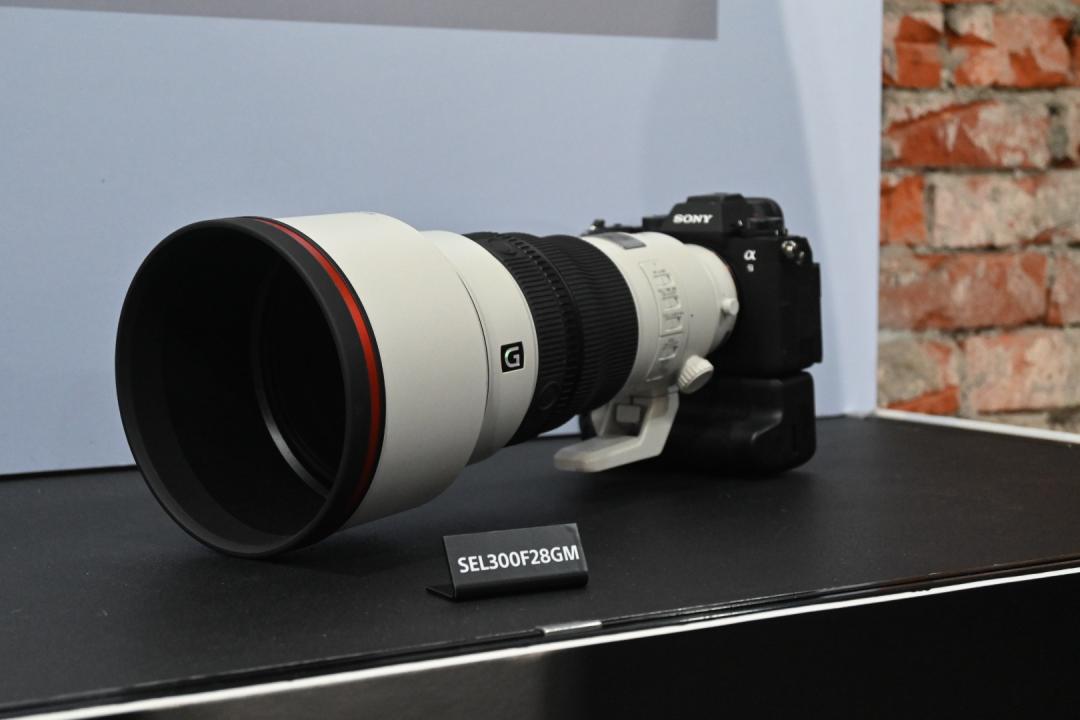 (圖/記者黃肇祥攝)
(圖/記者黃肇祥攝)
Sony α9 III 預計於 1 月 19 日在台開賣,售價為 184,980 元,搭配的垂直拍攝手把 VG-C5 售價是 12,980 元。同日登場的還有 EF 300m F2.8 GM OSS 望遠大光圈鏡頭,有同級最輕巧的 1,470g 鏡身,售價 194,980 元,從今日起開放訂購。
canon相機收購 canon相機收購
底片相機正夯! 朦朧氛圍的復古風潮席捲年輕世代 canon相機收購
canon相機收購
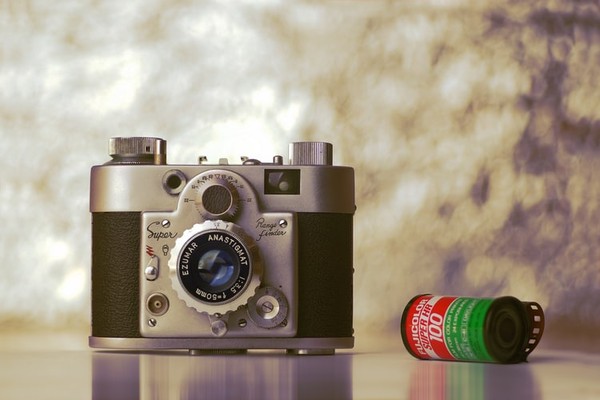
▲底片相機能拍出復古質感風格的照片。(示意圖/Photo by VanveenJF on Unsplash)
記者張家瑋/綜合報導
近年來復古當道,從摺疊式掀蓋手機到底片相機,都掀起流行風潮。底片相機除了可以享受剎那瞬間的畫面捕捉,也能有收到沖洗照片時的滿滿驚喜感。Podcast節目《娜你知道嗎》主持人莫娜就來聊聊底片相機的逆勢回歸。
▲點擊收聽Podcast《娜你知道嗎》,搞懂底片相機有多夯。
莫娜分享了近期歌手伍佰老師的專訪,提到自己隨身攜帶的10個必備物品,其中包括他的相機收藏。伍佰老師以小相機和大相機來形容他的相機們,並表示這些相機是他的通行證,無論身在何處,都會攜帶著它們。令人驚訝的是,他擁有多達5台不同型號的理光GR相機,將它們視為珍貴的收藏品。
伍佰老師所擁有GR-1V和GR-1兩款理光底片相機,分別是在90年代和00年代初期所推出,這些相機以其獨特的色彩和質感而聞名,被譽為街拍神機,至今仍然受到大眾喜愛。特別值得一提的是,日本街頭攝影師森山大道的作品,大部分也都是以隨身攜帶的GR21所拍攝。
而隨著底片相機熱潮再起,底片的需求也隨之上升,加上各大廠近年陸續宣布停產和原物料短缺,導致價格持續上漲。舉例來說,一卷「富士業務100」(24張)的價格已達到了270元台幣,這個價格足夠買一張64GB的SD記憶卡,可以存儲上千張照片。

▲莫娜也分享了幾台CP值高的底片相機。(示意圖/取自免費圖庫pixabay)
莫娜也分享了幾台底片相機,像是Kodak柯達的Ektar H35,它具有現代感,被稱為CP值最高的相機之一,非常適合想要節省底片拍攝成本的人,僅需一兩千元即可入手。另一個選擇是Olympus Trip 35底片相機,它於1967年推出,具有濃厚的復古風格。最後一款則是canon相機收購canon canon相機收購canonet QL17底片相機,許多玩家視為最值得收藏的旁軸相機之一,它具有快速裝入底片的功能,在自動模式下,鏡頭會自動測光,並且通過觀景窗內的指針顯示光圈值,不過,這款相機更適合有經驗的攝影愛好者。
底片相機的魅力在於它們獨特的風格和拍攝體驗,不僅能夠激發攝影愛好者的靈感,還能帶來很多樂趣和回憶,你手上有底片相機在使用嗎?不如趁著連假時拍一卷,重新感受復古風潮吧。
 (圖/翻攝柯達網站)
(圖/翻攝柯達網站)
老相機品牌柯達再度熱銷!研調機構 BCN 公布 2024 年 BCN AWARD 大獎,綜合日本合作通路的銷售數據,統計出各類別相機的銷售冠軍。有趣的是,內建鏡頭的數位相機排行榜驚見柯達上榜!更以 20.7% 的銷售市佔擠下 Sony、富士站上第二名。
數據顯示,內建鏡頭的數位相機排行第一名是 canon相機收購canon 擁有 22.6% 市占率,而第二名則是柯達,第三名為富士(18.1%)。好久不見的柯達是從 2006 年統計以來首度攻佔前三名,儘管已經退出主流相機市場,仍有推出拍立得相機,以及透過品牌授權販售 CCD 相機 Kodak PIXPRO FZ55 ,恰好都有跟上年輕族群喜愛的復古風熱潮。
專業相機方面,傳統的單反機型仍是以 canon相機收購canon 稱霸,銷售市佔高達 77.1%,領先 Nikon(17.1%)與理光(5.8%)。現代主流的無反相機則以 Sony 領先,銷售市佔達到 34%,第二名 canon相機收購canon 以 28.3% 緊追在後,其次還有代表 M43 片幅的 OM Digital Solutions。
專用於影片錄製的機款,則是以 Sony、松下 Panasonic 兩大品牌吃下超過七成市占率,前者達到 38.7%、後者為 36.4%,第三名為 DJI。運動相機方面,GoPro 有超過一半以上(53.7%)的市占率,是目前最受到消費者歡迎的品牌,Insta360 則只搶下 18.1% 的市佔率,與 DJI(15.9%)相近。
canon相機收購 canon相機收購
I was taken for a ride by Canon’s 8K experience canon相機收購
canon相機收購
I was taken for a ride by canon相機收購canon’s 8K experience
I was taken for a ride by canon相機收購canon’s 8K experience
Share this story
If you buy something from a Verge link, Vox Media may earn a commission. See our ethics statement.
Ultra high-resolution video should make the viewer feel as if they were part of the action, or, in canon相機收購canon’s words, “simulate a physical experience.” It’s this philosophy that went into the interactive 8K Ride Experience in canon相機收購canon’s booth at CES 2016. Held in a small makeshift screening room in front of three large projector screens, the two-minute experience left me wondering what I had missed that was supposed to make me feel things.
The overall experience was rather lackluster
Four 4K projectors, each responsible for a quadrant of the projected screen, were stitched together to create the 8K video in front of me while two screens — one on each side of the main video screen — mirrored the main screen but were intentionally blurred to seemingly provide depth. From a user’s point of view, the video — shot in the Czech Republic with a canon相機收購canon prototype 8K camera and lens — guided me through a forest and then through the streets of a major city, before finally looking down a track at an oncoming locomotive, a climax that was likely meant as homage to the 1895 silent French film The Arrival of the Mail Train. As urban legend has it, when the black-and-white film was shown for the first time, audience members screamed and ran to the back of the theater in terror. The impact in 8K, however, was lost on a savvy crowd already accustomed to 4K, 3D, and virtual reality headsets.
The quality of other scenes were easier to appreciate. The granular details of a church exterior in one scene drew audible gasps from a few of the dozen or so audience members able to fit into the screening room. But the overall experience was rather lackluster. In other scenes, one in particular showing a room decorated with dolls and another showing the inside of a library, looked computer generated to my eyes — almost like a high-quality video game; it was only after the preview was over did I get clarification from canon相機收購canon representatives that they did in fact shoot a scene from the inside of a real doll house.
While the demonstration was interesting, it’s hard to walk away from the so-called 8K Experience and be excited for canon相機收購canon’s vision of the future.
 (圖/美聯社)
(圖/美聯社)
本週精選5大科技新聞:全球無線耳機市占 Top 5 排行榜洗牌、電腦版 LINE釋出更新版本、回覆、公告功能升級、蘋果iPhone 15即將推出電池健康度新指標、柯達擊敗 Sony與富士衝上日本最熱銷相機排行榜單亞軍,以及
傳任天堂下一代 新主機最快六月公開Switch 首發遊戲曝光。
蘋果 AirPods 買氣驟降!全球無線耳機市占 Top 5 排行榜洗牌
無線耳機排行榜變天!研調機構 Canalys 最新數據揭露,2023 年第四季全球無線耳機出貨市占率排名,蘋果 AirPods 再度獲得龍頭寶座,卻面臨雙位數的下滑,更有新品牌搶進前五名。
Canalys 數據指出,蘋果 AirPods 在 2023 年第四季出貨市占達到 29%,遙遙領先第二名的三星(9%),然而蘋果卻面臨重大挑戰,比起 2022 年同期下滑了多達 13% …..繼續閱讀。
→ 不只有 Apple Watch 可以選!台灣最熱銷 10 款智慧穿戴排名揭曉
 LINE台灣推出LINE電腦版8.6版本更新。(圖/記者劉惠琴攝)
LINE台灣推出LINE電腦版8.6版本更新。(圖/記者劉惠琴攝)
電腦版 LINE 回覆、公告功能升級!投票、記事本都支援了
LINE 電腦版更新了!最新 8.6 版本針對「回覆」、「公告」功能進行升級,能適用更多種類的訊息,像是投票、記事本都已經正式支援了。根據官方公告,LINE 電腦版 8.6 更新已經在 2 月 7 日於 Windows 釋出,Mac 版本也於 2 月 13 日上線。更新後,會先跟上手機版的新功能,允許用戶針對「檔案」進行…..繼續閱讀。
→ 防止大頭照個人檔案遭惡意濫用!WhatsApp導入全新封鎖功能
 不少蘋果用戶都有電池健康度焦慮症。(圖/路透社)
不少蘋果用戶都有電池健康度焦慮症。(圖/路透社)
電池健康度不看趴數了!蘋果iPhone 15即將推出新指標
蘋果iPhone用戶過去習慣以「最大容量」來評估電池健康度,一旦最大容量降到80%以下,即代表可能需要更換新電池。然而,在即將推出的iOS 17.4中,蘋果對於電池健康度的顯示方式進行了重大調整,改採用「是否正常」作為新指標,而不僅是提供最大容量。在最新的iOS 17.4版本中,蘋果添加…..繼續閱讀。
→ 全球5G手機出貨量突破20億支!研調:這款iPhone是關鍵
→ 蘋果公布最新電池測試 !iPhone 15壽命打敗舊款:可充千次
 (圖/翻攝柯達網站)
(圖/翻攝柯達網站)
日本最熱銷相機排行榜揭曉!驚見柯達衝上第二名 擊敗 Sony、富士
老相機品牌柯達再度熱銷!研調機構 BCN 公布 2024 年 BCN AWARD 大獎,綜合日本合作通路的銷售數據,統計出各類別相機的銷售冠軍。有趣的是,內建鏡頭的數位相機排行榜驚見柯達上榜!更以 20.7% 的銷售市佔擠下 Sony、富士站上第二名。數據顯示,內建鏡頭的數位相機排行第一名是 canon相機收購canon 擁有…..繼續閱讀。
→ 富士隨身相機升級AI對焦辨識!輕巧兼具高畫質 防手震拍照更清晰
 (圖/記者黃肇祥攝)
(圖/記者黃肇祥攝)
任天堂下一代 Switch 首發遊戲曝光?傳新主機最快六月公開
canon相機收購 canon相機收購
Canon EOS 90D BODY (公司貨) canon相機收購
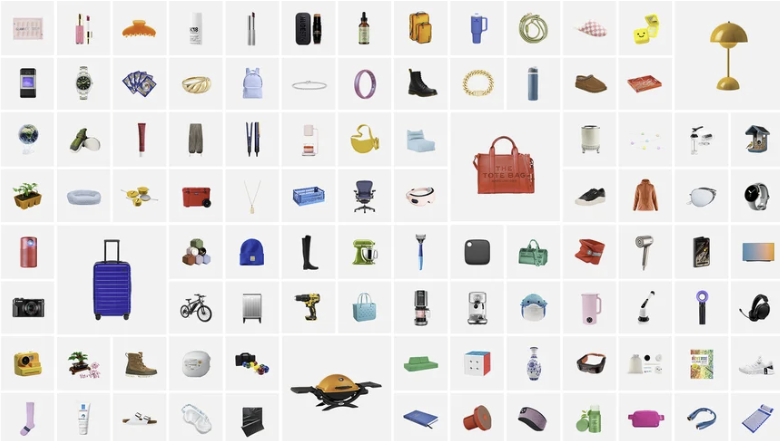 (圖/翻攝Google官方部落格)
(圖/翻攝Google官方部落格)
邁入年末,一連串購物節與特惠活動接連展開,加上適逢聖誕節等假期,不少人都有送禮需求,哪些禮物才體面又合適呢?為此 Google 推出 Holiday 100 頁面,根據熱搜排名推薦了 100 項禮物清單。
Google 依據全年的搜尋趨勢進行統計,將熱門品項區分為服飾、美妝、玩具與遊戲以及居家、電子產品等不同分類,協助你快速篩選找到想要購買的禮物。其中在電子產品方面,有些項目僅列出大分類,例如「智慧電視」、「智慧手錶」、「電動腳踏車」、「睡眠耳機」,然而也有不少產品是直接被點名的。
唯一上榜的手機是 Google 旗下的 Pixel Fold 摺疊手機,官方聲稱今年搜尋量大增 700%,然而 Pixel Fold 也是今年才剛發表,不免讓人覺得 Google 或許有一點私心。相機產品最倍推薦的是 canon相機收購canon PowerShot G7 X Mark III,這是一款 1 吋感光元件的隨身相機,在今年的搜尋熱度達到 2019 年上市以來的巔峰。
其餘有特別點出品牌的還有 Coway Airmega Air Purifiers 空氣清淨機、Shark HyperAir Hair Dryer 吹風機、象印電子鍋、Breville Espresso 咖啡機、Minja 冰淇淋機,完整名單可參考 Holiday 100 頁面。
canon相機收購 canon相機收購
Canon EOS R 系統邁五週年 RF系列鏡頭支援三年保 canon相機收購
canon相機收購

▲canon相機收購canon EOS R 系統邁五週年。(圖/canon相機收購canon提供)
記者樓菀玲/綜合報導
canon相機收購canon 於「2023 年台北攝影器材展暨影音創作設備展」盛大亮相,全新主題「完美光學再定義」為消費者呈現其最新的數位相機、印表機和專業攝影機,更宣布即日起提供 RF 系列鏡頭三年保固服務,引發愛好者暴動。
此外,為慶祝 EOS R 系統五週年,canon相機收購canon 消費性產品事業群副總高耀聰公布,從即日起 canon相機收購canon 在台灣提供 RF 系列鏡頭三年保固,這不僅證明了 canon相機收購canon 對其產品的自信,更是對消費者的誠心承諾。
展覽期間,canon相機收購canon 也安排了豐富的攝影講座,共24場,涵蓋各式主題,為攝影愛好者和影音創作者提供專業知識。現場參與者更有機會參與各式活動,並有機會獲得 CP1500 印相機等大獎。特別的促銷優惠和限時活動等眾多好康,絕對值得一遊。
canon相機收購canon 的展區不僅專注於相機,其印表機部分也大放異彩。特色的 PRO 系列 A3+ 專業相片印表機和 G 系列大供墨複合機都能夠精確列印出高品質的照片,給予消費者最佳的視覺饗宴。專業攝影機部分更展出了完整的數位錄影機、電影級機種和鏡頭系列,讓影音創作者大開眼界。
 圖為 canon相機收購canon PowerShot V10,主打單手就能操控的 Vlog 錄影相機。 (記者黃肇祥攝)
圖為 canon相機收購canon PowerShot V10,主打單手就能操控的 Vlog 錄影相機。 (記者黃肇祥攝)
近年來隨著 YouTube、Tiktok 等影音平台崛起,越來越多年輕用戶打算購入第一台單眼相機,用來記錄生活,而這股趨勢也使得相機市場開始出現改變。日本零售通路業者觀察就指出,相機銷售有朝向兩極化發展的趨勢。
日媒《PhileWeb》採訪日本知名連鎖電器行 Bic Camera 店長乙川和也,通路業者第一手觀察指出,20-30 多歲之間的年輕用戶,主要推動小型相機的需求,尤其適用於 Vlog 相機,出於預算、攜帶需求,使得小型體積相機越來越受歡迎。他更表示,小型相機與全片幅相機的銷售兩極化發展越來越明顯,位於中間需求的用戶越來越少,主要就是全片幅、小型相機二選一。
乙川和也透露,目前有 3 款 Vlog 相機非常受到關注,像是由 DJI 推出的 Osmo Pocket 3 運動相機,還有富士旗下的袖珍掌上型相機 Instax Pal,以及由 canon相機收購canon 推出的 PowerShot V10。
在全畫幅相機之中,輕量化也是各品牌的發展趨勢,例如 Sony 推出了 a7C II、a7C R 等,試圖擺脫全片幅等同於沈重的刻板印象。另外則是由 Nikon Zf 帶起的復古造型熱潮,同樣受到傳統攝影愛好者的喜愛。
canon相機收購 canon相機收購
Canon 6D Mark II+24-105mm f4L IS II USM 單鏡組(平行輸入) canon相機收購
 (圖/翻攝Google官方部落格)
(圖/翻攝Google官方部落格)
邁入年末,一連串購物節與特惠活動接連展開,加上適逢聖誕節等假期,不少人都有送禮需求,哪些禮物才體面又合適呢?為此 Google 推出 Holiday 100 頁面,根據熱搜排名推薦了 100 項禮物清單。
Google 依據全年的搜尋趨勢進行統計,將熱門品項區分為服飾、美妝、玩具與遊戲以及居家、電子產品等不同分類,協助你快速篩選找到想要購買的禮物。其中在電子產品方面,有些項目僅列出大分類,例如「智慧電視」、「智慧手錶」、「電動腳踏車」、「睡眠耳機」,然而也有不少產品是直接被點名的。
唯一上榜的手機是 Google 旗下的 Pixel Fold 摺疊手機,官方聲稱今年搜尋量大增 700%,然而 Pixel Fold 也是今年才剛發表,不免讓人覺得 Google 或許有一點私心。相機產品最倍推薦的是 canon相機收購canon PowerShot G7 X Mark III,這是一款 1 吋感光元件的隨身相機,在今年的搜尋熱度達到 2019 年上市以來的巔峰。
其餘有特別點出品牌的還有 Coway Airmega Air Purifiers 空氣清淨機、Shark HyperAir Hair Dryer 吹風機、象印電子鍋、Breville Espresso 咖啡機、Minja 冰淇淋機,完整名單可參考 Holiday 100 頁面。
canon相機收購 canon相機收購
Canon EOS RP 單機身 公司貨 canon相機收購

▲canon相機收購canon EOS R 系統邁五週年。(圖/canon相機收購canon提供)
記者樓菀玲/綜合報導
canon相機收購canon 於「2023 年台北攝影器材展暨影音創作設備展」盛大亮相,全新主題「完美光學再定義」為消費者呈現其最新的數位相機、印表機和專業攝影機,更宣布即日起提供 RF 系列鏡頭三年保固服務,引發愛好者暴動。
此外,為慶祝 EOS R 系統五週年,canon相機收購canon 消費性產品事業群副總高耀聰公布,從即日起 canon相機收購canon 在台灣提供 RF 系列鏡頭三年保固,這不僅證明了 canon相機收購canon 對其產品的自信,更是對消費者的誠心承諾。
展覽期間,canon相機收購canon 也安排了豐富的攝影講座,共24場,涵蓋各式主題,為攝影愛好者和影音創作者提供專業知識。現場參與者更有機會參與各式活動,並有機會獲得 CP1500 印相機等大獎。特別的促銷優惠和限時活動等眾多好康,絕對值得一遊。
canon相機收購canon 的展區不僅專注於相機,其印表機部分也大放異彩。特色的 PRO 系列 A3+ 專業相片印表機和 G 系列大供墨複合機都能夠精確列印出高品質的照片,給予消費者最佳的視覺饗宴。專業攝影機部分更展出了完整的數位錄影機、電影級機種和鏡頭系列,讓影音創作者大開眼界。
canon相機收購 canon相機收購
【本週 5 大新聞】全球無線耳機5大品牌市佔榜單洗牌!任天堂新代Switch主機傳6月公開 canon相機收購
canon相機收購
 (圖/美聯社)
(圖/美聯社)
本週精選5大科技新聞:全球無線耳機市占 Top 5 排行榜洗牌、電腦版 LINE釋出更新版本、回覆、公告功能升級、蘋果iPhone 15即將推出電池健康度新指標、柯達擊敗 Sony與富士衝上日本最熱銷相機排行榜單亞軍,以及
傳任天堂下一代 新主機最快六月公開Switch 首發遊戲曝光。
蘋果 AirPods 買氣驟降!全球無線耳機市占 Top 5 排行榜洗牌
無線耳機排行榜變天!研調機構 Canalys 最新數據揭露,2023 年第四季全球無線耳機出貨市占率排名,蘋果 AirPods 再度獲得龍頭寶座,卻面臨雙位數的下滑,更有新品牌搶進前五名。
Canalys 數據指出,蘋果 AirPods 在 2023 年第四季出貨市占達到 29%,遙遙領先第二名的三星(9%),然而蘋果卻面臨重大挑戰,比起 2022 年同期下滑了多達 13% …..繼續閱讀。
→ 不只有 Apple Watch 可以選!台灣最熱銷 10 款智慧穿戴排名揭曉
 LINE台灣推出LINE電腦版8.6版本更新。(圖/記者劉惠琴攝)
LINE台灣推出LINE電腦版8.6版本更新。(圖/記者劉惠琴攝)
電腦版 LINE 回覆、公告功能升級!投票、記事本都支援了
LINE 電腦版更新了!最新 8.6 版本針對「回覆」、「公告」功能進行升級,能適用更多種類的訊息,像是投票、記事本都已經正式支援了。根據官方公告,LINE 電腦版 8.6 更新已經在 2 月 7 日於 Windows 釋出,Mac 版本也於 2 月 13 日上線。更新後,會先跟上手機版的新功能,允許用戶針對「檔案」進行…..繼續閱讀。
→ 防止大頭照個人檔案遭惡意濫用!WhatsApp導入全新封鎖功能
 不少蘋果用戶都有電池健康度焦慮症。(圖/路透社)
不少蘋果用戶都有電池健康度焦慮症。(圖/路透社)
電池健康度不看趴數了!蘋果iPhone 15即將推出新指標
蘋果iPhone用戶過去習慣以「最大容量」來評估電池健康度,一旦最大容量降到80%以下,即代表可能需要更換新電池。然而,在即將推出的iOS 17.4中,蘋果對於電池健康度的顯示方式進行了重大調整,改採用「是否正常」作為新指標,而不僅是提供最大容量。在最新的iOS 17.4版本中,蘋果添加…..繼續閱讀。
→ 全球5G手機出貨量突破20億支!研調:這款iPhone是關鍵
→ 蘋果公布最新電池測試 !iPhone 15壽命打敗舊款:可充千次
 (圖/翻攝柯達網站)
(圖/翻攝柯達網站)
日本最熱銷相機排行榜揭曉!驚見柯達衝上第二名 擊敗 Sony、富士
老相機品牌柯達再度熱銷!研調機構 BCN 公布 2024 年 BCN AWARD 大獎,綜合日本合作通路的銷售數據,統計出各類別相機的銷售冠軍。有趣的是,內建鏡頭的數位相機排行榜驚見柯達上榜!更以 20.7% 的銷售市佔擠下 Sony、富士站上第二名。數據顯示,內建鏡頭的數位相機排行第一名是 canon相機收購canon 擁有…..繼續閱讀。
→ 富士隨身相機升級AI對焦辨識!輕巧兼具高畫質 防手震拍照更清晰
 (圖/記者黃肇祥攝)
(圖/記者黃肇祥攝)
任天堂下一代 Switch 首發遊戲曝光?傳新主機最快六月公開
 (圖/記者黃肇祥攝)
(圖/記者黃肇祥攝)
過年親戚們齊聚一堂,久違相見一定得來拍幾張合照留念,但別只會排排站,英國著名攝影師 Helen Bartlett 就曾於 canon相機收購canon 官網分享拍攝家庭照片的 3 項小技巧,讓你抓住最自然、最有味道的一瞬間。
Helen Bartlett 首先表示,拍攝家庭合照可以透過改變高度、位置來創造構圖的平衡,例如讓爸媽將小孩子抱起來,能確保所有人的頭處於同一高度,也可以依據不同年齡、身高,讓孩子們坐在父母腿上或是靠在沙發的扶手上,調整畫面的結構。
也可以試著捕捉最自然且有趣的畫面,像是 Helen Bartlett 分享他認為最佳照片,是在正式拍攝後的下一張照片,因為一拍完之後,家庭成員們往往會相視而笑,因此可以先拍攝一張請家人們盯著鏡頭的正式合照,再伺機等待最佳畫面。
如果環境許可,不妨與周邊的物件搭配,像是在戶外公園,如果有倒下的樹,不妨讓小孩與其互動,嘗試或是站在樹的不同位置,或是在室內拍攝的時候,考慮到光線,要讓被攝者面向窗戶,使每一個人的臉都均衡曝光。
canon相機收購 canon相機收購

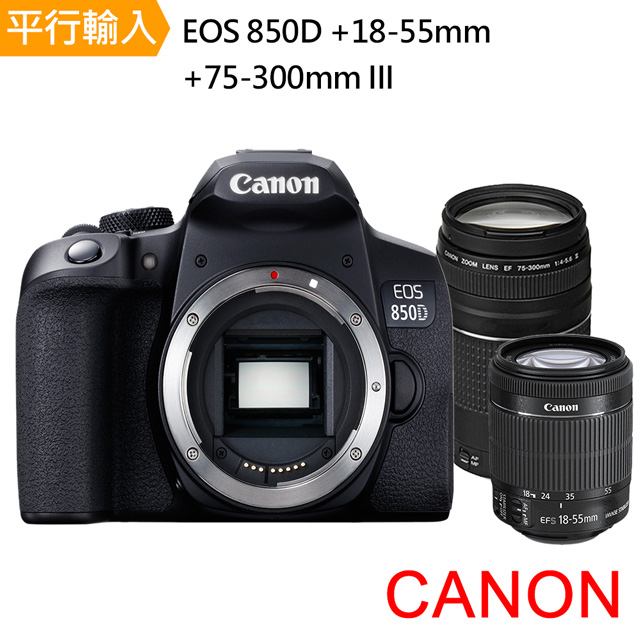
:format(webp)/cdn.vox-cdn.com/uploads/chorus_asset/file/15644772/canon相機收購canon-8k-experience1_2040.0.0.1452195425.jpg)
